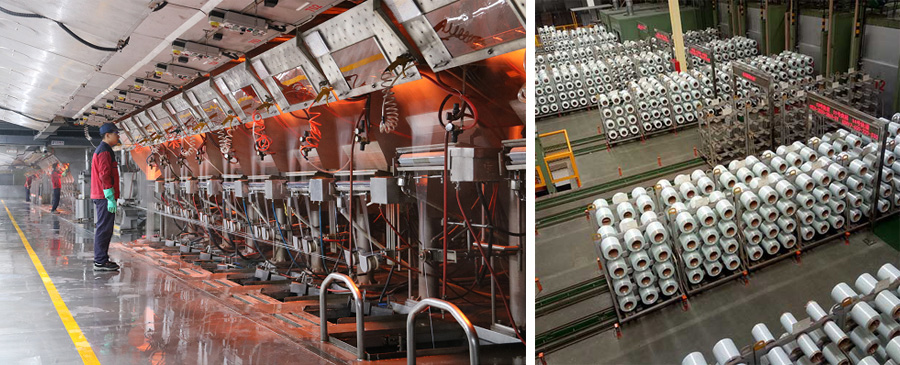Composition and characteristics of fiberglass
The main components are silica, alumina, calcium oxide, boron oxide, magnesium oxide, sodium oxide, etc. According to the amount of alkali content in the glass, it can be divided into:
①, non-alkali fiberglass (sodium oxide 0% ~ 2%, is an aluminum borosilicate glass)
②, medium alkali fiberglass (sodium oxide 8% ~ 12%, is boron or boron free soda-lime silicate glass) and high alkali fiberglass (sodium oxide 13% or more, is soda-lime silicate glass).
Features: fiberglass than organic fibers, high temperature, non-combustible, corrosion resistance, heat insulation, sound insulation, high tensile strength, good electrical insulation. But brittle, poor abrasion resistance. Used in the manufacture of reinforced plastics or reinforced rubber, as a reinforcing material fiberglass has the following characteristics:
①, high tensile strength, small elongation (3%).
②, High coefficient of elasticity, good rigidity.
③, High elongation within the elastic limit and high tensile strength, so it absorbs large impact energy.
④, Inorganic fiber, non-combustible, good chemical resistance.
⑤, Water absorption is small.
⑥, Scale stability and heat resistance are good.
⑦, Good processability, can be made into strands, bundles, felts, fabrics and other different forms of products.
⑧, Transparent and light transmittable.
⑨, Good adhesion to resin.
⑩, Inexpensive.
⑪, not easy to burn, can be melted into glassy beads at high temperature.
Production process of fiberglass
There are two kinds of fiberglass production process:
Two molding: crucible drawing method
One time molding: Pool kiln drawing method
Crucible wire drawing method process, the first glass raw material melted at high temperature into a glass ball, and then the second melting of the glass ball, high-speed drawing made of glass fiber raw silk. This process has high energy consumption, unstable molding process, low labor productivity and other disadvantages, basically eliminated by large glass fiber manufacturers.
Pool kiln wire drawing method of chlorite and other raw materials in the kiln melted into a glass solution, excluding air bubbles through the pathway transported to the porous leakage plate, high-speed drawing made of fiberglass filaments. The kiln can be connected through multiple pathways to hundreds of leakage plates for simultaneous production. This process is simple, energy-saving, stable molding, high efficiency and high yield, to facilitate large-scale fully automated production, become the mainstream of the international production process, with the process of production of fiberglass accounted for more than 90% of global production.
Fiberglass Market
According to the different raw materials selected for production, fiberglass can be divided into non-alkali, medium alkali, high alkali and special fiberglass; according to the different appearance of the fiber, fiberglass can be divided into continuous fiberglass, fixed-length fiberglass, glass wool; according to the differences in the diameter of the monofilaments, fiberglass can be divided into ultra-fine fibers (diameter of less than 4 μm), senior fibers (diameter of 3 ~ 10 μm), intermediate fibers (diameter of) greater than 20μm), coarse fibers (diameter of about 30μm). According to the different performance of the fiber, the fiberglass can be divided into ordinary fiberglass, strong acid and alkali resistant fiberglass, strong acid resistant fiberglass, high temperature resistant fiberglass, high strength fiberglass and so on.
Post time: May-27-2024






